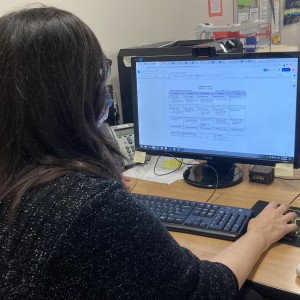Tech Overload: How PV teachers are dealing with online learning
October 5, 2020
It has now been almost seven months since the COVID-19 pandemic hit the United States. In that time, teachers have had to adapt to a new form of teaching: online.
Although most teachers have had to learn something new, they have powered through and persevered.
Technology Director Kevin Pennekamp was the one in charge of this change. “When you completely change the learning platform to include in person and virtual online learning, there is a learning curve, and it takes a considerable amount of time to understand how to use the tools but also support student learning in the process,” he said.
“Our staff is very resilient and I give credit to all because everyone was at varying degrees of comfortability and knowledge of how to use the tools available,” Pennekamp continued. He believes the transition was extraordinarily successful.
Janene Murphy, a business teacher at PVHS, has had her own struggles and successes adjusting to online teaching. Before the pandemic, Murphy was a substitute teacher for six years. As a sub, she did not have to do online teaching, but she was (and still is) taking online courses through Morningside College and earning her M.B.A. through Western Illinois University.
“I am hoping I’ve been able to take my experience as an online student to make things easier for the online students I have now,” she empathized. “I know it can be challenging.” She hopes she has been able to find a balance between what to do inside and outside of class.
As a teacher, Murphy had to learn how to use Google Classroom for assignments and draw electronically for her accounting class. The online classroom has been a struggle, as she now has to determine due dates for assignments and whether or not the post should be an assignment or a resource.
On the other hand, Murphy believes her greatest feat throughout the seven months was learning how to use the drawing feature on a tablet. Her next challenge is to make her handwriting easier to read.
Murphy is not the only teacher to learn so much in so little time, though. “Besides the countless hours each individual teacher has put in, the staff’s professional development calendar was modified to support 20 hours of virtual learning this summer,” Pennekamp noted. More emphasis was placed overall on holding online meetings, drawing electronically, recording videos and managing Google Classroom.
Murphy acknowledged the struggle for students as well by advising everyone to communicate. “Students need to let teachers know what works for them and what doesn’t,” she recommended. “Teachers need to do the same. Silence is the enemy here. We’re in this together!”
Education has proven to be the most successful when the teacher teaches and the student learns. The format may be different, but teachers are willing to keep teaching. In return, students must be willing to learn in order for school to be the most successful.






